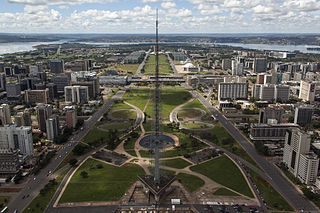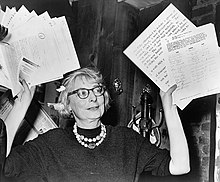
Smart growth is an urban planning and transportation theory that concentrates growth in compact walkable urban centers to avoid sprawl. It also advocates compact, transit-oriented, walkable, bicycle-friendly land use, including neighborhood schools, complete streets, and mixed-use development with a range of housing choices. The term "smart growth" is particularly used in North America. In Europe and particularly the UK, the terms "compact city", "urban densification" or "urban intensification" have often been used to describe similar concepts, which have influenced government planning policies in the UK, the Netherlands and several other European countries.

Urban design is an approach to the design of buildings and the spaces between them that focuses on specific design processes and outcomes. In addition to designing and shaping the physical features of towns, cities, and regional spaces, urban design considers 'bigger picture' issues of economic, social and environmental value and social design. The scope of a project can range from a local street or public space to an entire city and surrounding areas. Urban designers connect the fields of architecture, landscape architecture and urban planning to better organize physical space and community environments.
Urban studies is the diverse range of disciplines and approaches to the study of all aspects of cities, their suburbs, and other urban areas. This includes among others: urban economics, urban planning, urban ecology, urban transportation systems, urban politics, sociology and urban social relations. This can be contrasted with the study of rural areas and rural lifestyles.

Land use planning is the process of regulating the use of land by a central authority. Usually, this is done to promote more desirable social and environmental outcomes as well as a more efficient use of resources. More specifically, the goals of modern land use planning often include environmental conservation, restraint of urban sprawl, minimization of transport costs, prevention of land use conflicts, and a reduction in exposure to pollutants. In the pursuit of these goals, planners assume that regulating the use of land will change the patterns of human behavior, and that these changes are beneficial. The first assumption, that regulating land use changes the patterns of human behavior is widely accepted. However, the second assumption - that these changes are beneficial - is contested, and depends on the location and regulations being discussed.

Urbanism is the study of how inhabitants of urban areas, such as towns and cities, interact with the built environment. It is a direct component of disciplines such as urban planning, a profession focusing on the design and management of urban areas, and urban sociology, an academic field which studies urban life.
Participatory design is an approach to design attempting to actively involve all stakeholders in the design process to help ensure the result meets their needs and is usable. Participatory design is an approach which is focused on processes and procedures of design and is not a design style. The term is used in a variety of fields e.g. software design, urban design, architecture, landscape architecture, product design, sustainability, graphic design, planning, and health services development as a way of creating environments that are more responsive and appropriate to their inhabitants' and users' cultural, emotional, spiritual and practical needs. It is also one approach to placemaking.

A living street is a street designed with the interests of pedestrians and cyclists in mind by providing enriching and experiential spaces. Living streets also act as social spaces, allowing children to play and encouraging social interactions on a human scale, safely and legally. Living streets consider all pedestrians granting equal access to elders and those who are disabled. These roads are still available for use by motor vehicles; however, their design aims to reduce both the speed and dominance of motorized transport. The reduction of motor vehicle dominance creates more opportunities for public transportation.

The Death and Life of Great American Cities is a 1961 book by writer and activist Jane Jacobs. The book is a critique of 1950s urban planning policy, which it holds responsible for the decline of many city neighborhoods in the United States. The book is Jacobs' best-known and most influential work.
Landscape planning is a branch of landscape architecture. According to Erv Zube (1931–2002) landscape planning is defined as an activity concerned with developing landscaping amongst competing land uses while protecting natural processes and significant cultural and natural resources. Park systems and greenways of the type designed by Frederick Law Olmsted are key examples of landscape planning. Landscape designers tend to work for clients who wish to commission construction work. Landscape planners analyze broad issues as well as project characteristics which constrain design projects.

Livability or liveability is the degree to which a place is good for living. Livability refers to the concerns that are related to the long-term wellbeing of individuals and communities. It encompasses factors like neighborhood amenities, including parks, open space, walkways, grocery shops and restaurants as well as environmental quality, safety and health. It also incorporates things like cost and friendliness. These features contribute to the pleasantness and accessibility of communities. Additionally, livability considers the availability and quality of public transport, educational institutions and healthcare facilities. It also considers the overall cultural and social atmosphere of a place, including the presence of diverse recreational activities and community engagement opportunities. All these factors combined create an environment that enhances the overall quality of life for residents.
Project for Public Spaces (PPS) is a nonprofit organization based in New York dedicated to creating and sustaining public places that build communities, in an effort often termed placemaking.
Winter City or Winter Cities is a concept for communities in northern latitudes that encourages them to plan their transportation systems, buildings, and recreation project around the idea of using their infrastructure during all four seasons, including winter, rather than just the other three.
Place identity or place-based identity refers to a cluster of ideas about place and identity in the fields of geography, urban planning, urban design, landscape architecture, interior design, spatial design, environmental psychology, ecocriticism and urban sociology/ecological sociology. Place identity is sometimes called urban character, neighbourhood character or local character. Place identity has become a significant issue in the last 25 years in urban planning and design. Place identity concerns the meaning and significance of places for their inhabitants and users, and how these meanings contribute to individuals' conceptualizations of self. Place identity also relates to the context of modernity, history and the politics of representation. In other words, historical determinism, which intersects historical events, social spaces and groups by gender, class, ethnicity. In this way, it explores how spaces have evolved over time by exploring the social constructs through time and the development of space, place and power. To the same extent, the politics of representation is brought into context, as the making of place identity in a community also relates to the exclusion or inclusion in a community. Through this, some have argued that place identity has become an area for social change because it gives marginalized communities agency over their own spaces. In the same respect, it is argued that place identity has also been used to intervene social change and perpetuate oppression from a top-down approach by creating segregated spaces for marginalized communities.
Ronald Lee Fleming, F.A.I.C.P., is the founder and president of The Townscape Institute, a not-for-profit public interest planning organization founded in the United States in 1979. He is a fellow of the American Institute of Certified Planners.

In urban planning, walkability is the accessibility of amenities by foot. It is based on the idea that urban spaces should be more than just transport corridors designed for maximum vehicle throughput. Instead, it should be relatively complete livable spaces that serve a variety of uses, users, and transportation modes and reduce the need for cars for travel.

Healthy community design is planning and designing communities that make it easier for people to live healthy lives. Healthy community design offers important benefits:
OpenPlans is a non-profit that advocates for making the streets of New York City livable for all residents. Open Plans uses tactical urbanism, grassroots advocacy, policy and targeted journalism to promote structural reforms within city government that support livable streets, neighborhoods and the city-at-large. The organization was founded in 1999 by Mark Gorton, the creator of LimeWire.
The Rudy Bruner Award for Urban Excellence (RBA) was established in 1986 by Cambridge, Massachusetts architect Simeon Bruner. The award is named after Simeon Bruner's late father, Rudy Bruner, founder of the Bruner Foundation. According to the Bruner Foundation, the RBA was created to increase understanding of the role of architecture in the urban environment and promote discussion of what constitutes urban excellence. The award seeks to identify and honor places, rather than people, that address economic and social concerns along with urban design.
Technical aspects of urban planning involve the technical processes, considerations and features that are involved in planning for land use, urban design, natural resources, transportation, and infrastructure.

Urban planning, also known as town planning, city planning, regional planning, or rural planning in specific contexts, is a technical and political process that is focused on the development and design of land use and the built environment, including air, water, and the infrastructure passing into and out of urban areas, such as transportation, communications, and distribution networks, and their accessibility. Traditionally, urban planning followed a top-down approach in master planning the physical layout of human settlements. The primary concern was the public welfare, which included considerations of efficiency, sanitation, protection and use of the environment, as well as effects of the master plans on the social and economic activities. Over time, urban planning has adopted a focus on the social and environmental bottom lines that focus on planning as a tool to improve the health and well-being of people, maintaining sustainability standards. Sustainable development was added as one of the main goals of all planning endeavors in the late 20th century when the detrimental economic and the environmental impacts of the previous models of planning had become apparent. Similarly, in the early 21st century, Jane Jacobs's writings on legal and political perspectives to emphasize the interests of residents, businesses and communities effectively influenced urban planners to take into broader consideration of resident experiences and needs while planning.














